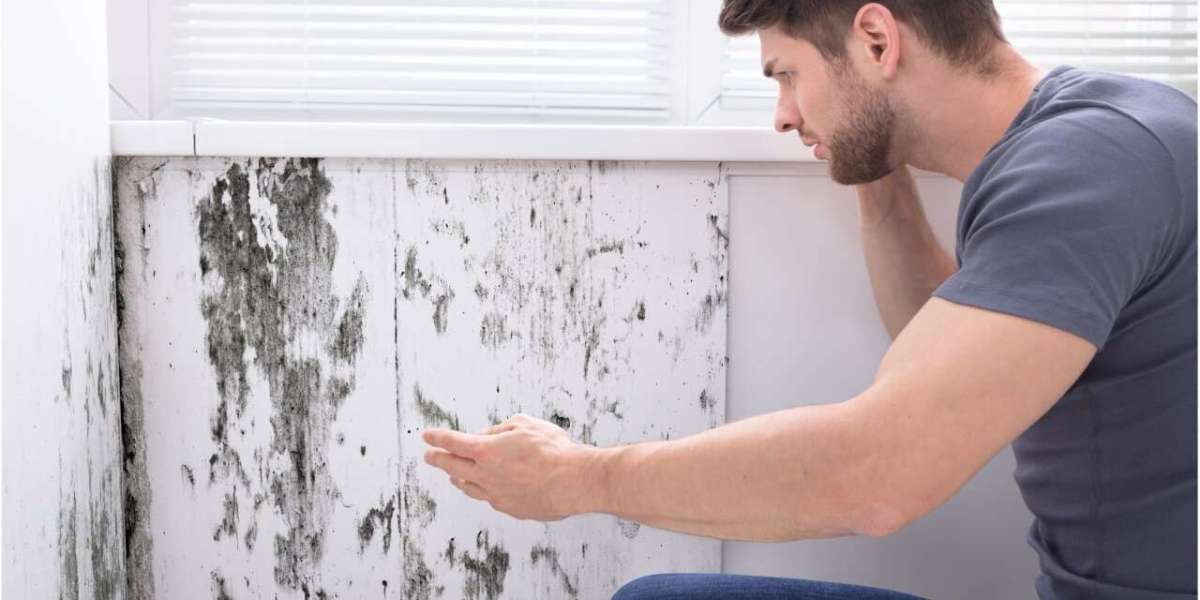Introduction
Everywhere you look, there seems to be a lot of information about the horrors of finding and living with mold in your home. Whether online articles or conversations with your neighbors or friends, everyone seems to have strong feelings about the causes and dangers of mold contamination. The web is littered with overly emotional and overblown statements about the causes and dangers of mold exposure and who should be held responsible when this occurs. I have written this article to separate the facts from the myths and to help you deal with mold in your home with a rational and well-informed knowledge foundation.
Truth About Mold Contamination
As a homeowner, it is vital to understand the potential dangers of mold contamination. Mold is a common problem in residential settings and can have serious health consequences if not appropriately addressed. This article will provide an overview of mold contamination, its causes, and its associated health issues. I will also discuss how to prevent and detect mold contamination, the importance of professional mold remediation, and the potential health risks associated with mold exposure.
Introduction to Mold Contamination
Mold is a type of fungus that grows in damp and humid environments. It can grow on any organic matter, including wood, paper, and food. Excessive mold exposure can cause several health problems, including allergies, respiratory infections, and asthma. Furthermore, mold contamination can also cause damage to your home, including discoloration, deterioration, and structural damage.
Mold spores are present in the air we breathe, but in small quantities, they are harmless. When mold begins to grow and multiply, it can release large amounts of spores into the air, creating a serious health hazard. Mold contamination can occur in any part of your home, including walls, ceilings, floors, and furniture.
Understanding Mold and its Causes
Mold thrives in damp and humid environments, making areas such as basements, bathrooms, and kitchens particularly susceptible to mold growth. Mold can also grow on any surface that has been exposed to moisture. Poor ventilation, water leaks, and high humidity levels are all factors that can contribute to mold growth.
Mold can also grow as a result of water damage. If your home has suffered from water damage due to flooding, a burst pipe, moisture intrusion from landscaping irrigation, or a leaky roof, there is a high risk of mold contamination. It is important to address any water damage promptly to prevent mold growth.
Health Issues Caused by Mold Contamination
Mold contamination can cause several health issues, particularly for those with allergies, asthma, or weakened immune systems. Mold exposure can cause symptoms such as nasal congestion, coughing, wheezing, and itchy eyes. In some cases, mold exposure can cause more severe health problems, such as respiratory infections and asthma attacks.
Long-term mold exposure can also lead to chronic health problems, including neurological problems, memory loss, and depression. It is essential to take mold contamination seriously and to take steps to prevent and address it promptly.
Signs of Mold Contamination in Your Home
The most obvious sign of mold contamination is visible mold growth. Mold can appear as black, green, or white spots and grow on any surface exposed to moisture. Other signs of mold contamination include a musty odor, water stains, and discoloration on walls, ceilings, and floors.
If you suspect that your home may be contaminated with mold, it is crucial to have it inspected and, if necessary, tested by a professional. Mold testing can identify the type and extent of mold contamination in your home and help you develop a remediation plan.
Prevention and Detection of Mold Contamination
Preventing mold contamination starts with controlling moisture levels in your home. This includes fixing leaks, ensuring proper ventilation, and using dehumidifiers in damp areas. Regular cleaning and maintenance can also help prevent mold growth.
If you suspect that your home may be contaminated with mold, it is important to have it tested by a professional. Mold testing can identify the type and extent of mold contamination in your home and help you develop a remediation plan.
How Water Damage Leads to Mold Contamination
Water damage is one of the most common causes of mold contamination. When your home suffers from water damage, it creates the perfect environment for mold to grow. Mold can begin to grow within 48 to 72 hours (2-3 days) after water damage occurs, making it important to address any water damage promptly.
If your home has suffered from water damage, it is important to have it inspected by a professional. A professional can identify areas of your home that may be at risk for mold growth and develop a remediation plan.
Mold Testing and Removal
If you suspect that your home may be contaminated with mold, it is important to have it tested by a professional. Mold testing can identify the type and extent of mold contamination in your home and help you develop a remediation plan.
Mold remediation involves removing contaminated materials, such as walls, floors, and ceilings, and cleaning any remaining surfaces with specialized equipment. Hiring a professional mold remediation company is important to ensure that all mold is removed safely and effectively.
Health Risks Associated with Mold Exposure
Mold exposure can cause several health problems, particularly for those with allergies, asthma, or weakened immune systems. Mold exposure can cause symptoms such as nasal congestion, coughing, wheezing, and itchy eyes. In some cases, mold exposure can cause more serious health problems, such as respiratory infections and asthma attacks.
Long-term mold exposure can also lead to chronic health problems, including neurological problems, memory loss, and depression. It is essential to take mold contamination seriously and to take steps to prevent and address it promptly.
The Importance of Professional Mold Remediation
Mold remediation is a complex process that requires specialized equipment and expertise. Hiring a professional mold remediation company is vital to ensure that all mold is removed safely and effectively. Certified Mold Remediation companies in California, including Orange County, need to meet at least these criteria:
- They must hold a B-General Contractor’s License. Check the contractor’s license at https://www.cslb.ca.gov/onlineservices/checklicenseII/checklicense.aspx.
- They should hold an Applied Microbial Remediation Certification (AMRT) from the IICRC. Ask your contractor to provide you with a copy of their IICRC Certifications. Check the expiration date of their Certificate. You can learn more about the IICRC at https://iicrc.org/abouttheiicrc/
- They need to hold Environmental Liability Pollution Insurance rider in addition to regular General Liability Insurance.
- They must provide you with a detailed written mold remediation protocol based on ANSI/IICRC S-520 Standards.
- They must have a track record, positive reviews, and significant hands-on field experience.
5 Key Facts about Mold Contamination in the Home
Mold contamination in homes can cause various problems for the house’s structure and people’s health. Here are some critical facts about mold contamination:
- Causes: Mold grows in damp, warm, and humid environments. Leaks in roofs, windows, or pipes, condensation, poor ventilation, flooding, and damp basements or crawl spaces typically cause it.
- Types of Molds: Several kinds of molds can be found in homes, including but not limited to Aspergillus, Cladosporium, Penicillium, and the infamous Stachybotrys chartarum, often referred to as “black mold.” Each type can have different health effects and may require different removal methods.
- Health Effects: Mold exposure can lead to various health problems. These can range from mild allergic reactions such as sneezing, runny nose, red eyes, and skin rash to more severe issues like asthma attacks. People with weakened immune systems, older people, and infants may be more susceptible to these effects. Some molds produce mycotoxins, which can be harmful or even fatal if inhaled, ingested, or come into contact with skin.
- Identifying Mold: Mold often appears as a discolored patch or spots that may be green, black, brown, pink, or orange. It might also have a fuzzy or slimy texture. A musty smell can also indicate the presence of mold.
- Prevention: Proper ventilation, controlling humidity levels (usually below 60%, ideally 30-50%), fixing leaks promptly, and regular cleaning can help prevent mold growth. Using materials that resist mold in home construction can also be effective.
Remember, if you’re dealing with a significant mold problem, it’s generally best to get professional help to ensure the mold is completely and safely removed.
5 Myths about Mold Contamination in the Home
- Myth: All molds are toxic and harmful to health. Fact: While certain molds produce mycotoxins that can be harmful, most molds commonly found in homes are not toxic. However, even non-toxic molds can cause allergies and respiratory problems in sensitive individuals.
- Myth: Bleach can effectively remove mold. Fact: Bleach is not recommended for mold remediation. It can only temporarily remove mold from non-porous surfaces but doesn’t effectively eliminate mold from porous materials like drywall or wood. Professional mold remediation techniques should be used to address mold issues properly.
- Myth: Mold is only found in older or poorly maintained homes. Fact: Mold can grow in any home, regardless of age or maintenance level. Moisture, humidity, and poor ventilation can contribute to mold growth. Newer homes can also be susceptible if they have moisture issues.
- Myth: Mold is only a problem if it’s visible. Fact: While visible mold growth is an obvious sign of a problem, mold can also grow behind walls and baseboards, under flooring materials, and in hidden areas. Even if mold is not visible, a musty odor or unexplained health symptoms can indicate its presence.
- Myth: Removing mold is a DIY task. Fact: Small, isolated patches of mold on non-porous surfaces can sometimes be cleaned by homeowners using appropriate precautions. However, professionals should handle larger mold infestations, extensive growth, or mold in hard-to-reach areas. Improper mold removal can lead to further contamination and health risks.
Take Away: Protecting Your Home and Health from Mold Contamination
Mold contamination can pose serious health risks and can cause damage to your home. It is important to take steps to prevent and address mold contamination promptly. This includes:
- Controlling moisture levels in your home
- Addressing any water damage promptly
- Having your home inspected and tested by a professional if you suspect mold contamination.
Hiring a professional mold remediation company is also important to ensure that all mold is removed safely and effectively. By taking these steps, you can protect your home and your health from the dangers of mold contamination.
If you’re looking for a qualified and experienced mold remediation contractor and a reliable mitigation and restoration team, you should consider hiring Sparkle Restoration Services. We provide a wide range of services and have the experience and expertise to ensure that your emergency water, mold, or fire project is done right the first time. Read what some of our many delighted clients have said about their Sparkle Experience. Contact us today to learn more about our services and to get started on your project.









